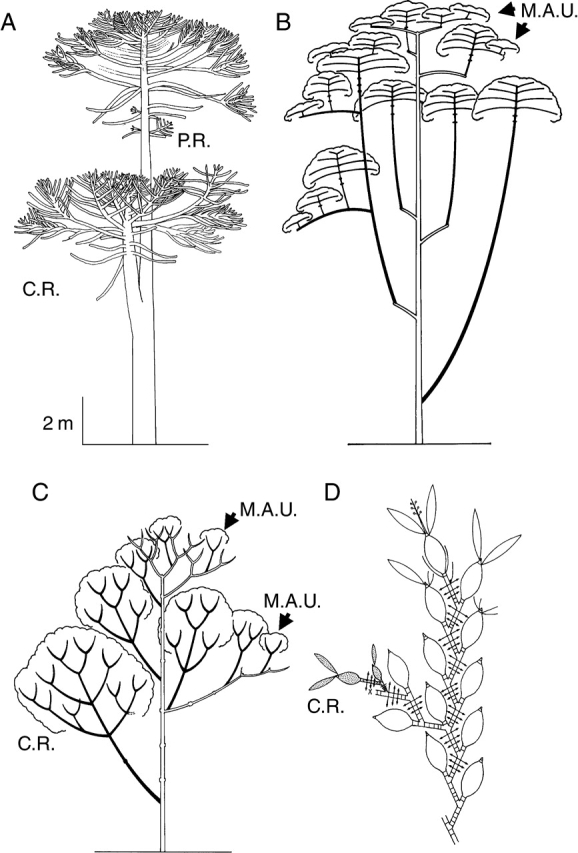Fig. 23.

Opportunistic reiteration and structure of the reiterated complexes. (A) Opportunistic, ‘partial’ (P.R.) and ‘complete’ (C.R.) reiteration in an individual of Araucaria araucana (Araucariaceae; from Grosfeld et al., 1999). Diagrammatic representation of reiterated complexes (in black) according to their location on the tree in (B) Symphonia globulifera (from Barthélémy, 1988) and in (C) Isertia coccinea (from Barthélémy, 1988). All complete reiterated complexes result from the development of a previously dormant bud (delayed reiteration). They all duplicate the original sequence of differentiation of the original individual but the duplication is smaller and more ‘pauperized’ according to their insertion from the base of the trunk to the ‘periphery’ of the crown. At the top of the tree and in the most peripheral part of the crown, pauperization of the duplication is the highest and reiterated complexes all have a reduced and minimal specific structure (in the case of Symphonia globulifera, a small trunk bearing only one flowering tier of plagiotropic branches, and in the case of Isertia coccinea, a succession of small sympodial units only branched below the terminal inflorescence) named ‘Minimal Architectural Unit’ (M.A.U.) by Barthélémy (1988). (D) Opportunistic, ‘complete’ (C.R.) reiteration (dotted units) in old parts of a traumatically cut (x) sympodial herb (Encyclia vespa, Orchidaceae, from Barthélémy, 1988). Double arrows, roots.
